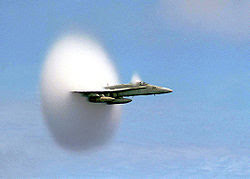Visit our Flugtag Website!!!
PASADENA, Calif. – A NASA spacecraft sped past a small comet Thursday, beaming pictures back to Earth that gave scientists a rare close-up view of its center. Mission controllers burst into applause upon seeing images from the flyby that revealed a peanut-shaped comet belching jets of poisonous gases.
"It's hyperactive, small and feisty," said mission scientist Don Yeomans of the NASA Jet Propulsion Laboratory.
The close encounter occurred 13 million miles from Earth when the Deep Impact craft, hurtling through space, flew within 435 miles of comet Hartley 2. It's only the fifth time that a comet's core has been viewed up close.
Scientists are interested in comets because they're icy leftovers from the formation of the solar system about 4.5 billion years ago. Studying them could provide clues to how Earth and the planets formed and evolved.
"The scientific work is just beginning now," principal investigator Michael A'Hearn, of the University of Maryland, said at a post-mission news conference. "The engineers did a fantastic job of getting us data. Now we have to make sense of it."
Thursday's flyby is actually an encore mission for Deep Impact. It set off cosmic fireworks on July 4, 2005, when it fired a copper probe that crashed into comet Tempel 1. The high-speed collision spewed a cloud of debris into space, giving scientists their first peek of the interior.
After the $333 million comet-buster, NASA recycled Deep Impact for a new mission to visit another comet. It was supposed to target comet Boethin in 2008, but it was nowhere to be found. Scientists theorized the comet may have broken up into small pieces.
Deep Impact was then redirected to Hartley 2. Roughly 1 1/2 miles long, Hartley 2 is the smallest comet to be photographed up close. On its way there, the craft spent several months scanning a cluster of nearby stars with known planets circling them.
While its latest task lacks the Hollywood drama of the Tempel 1 crash, researchers still consider it an important mission. Unlike in 2005, viewers could not see Thursday's comet encounter in real time since the craft's antenna was not pointed at Earth as it flew past Hartley 2.
"There are a lot of open questions about comets and their life cycle," said project manager Tim Larson of JPL, which manages the $42 million encore mission. "We have so little data that every time we have an opportunity to go near a comet, it's a chance to expand our knowledge."
Since September, Deep Impact has been stalking Hartley 2 like a paparazzo, taking images every 5 minutes and gathering data. It's the first craft to visit two comets.
Deep Impact will observe Hartley 2 until Thanksgiving and then wait for further instructions from NASA. Thespace agency has not decided whether to reuse Deep Impact again. The craft does not have enough fuel on board to do another flyby.
The latest images add to scientists' cometary photo album, said astronomer David Jewitt of the University of California, Los Angeles, who had no role in the project.
"We're visual animals and nothing seems wholly real to us until we have a nice picture of it," Jewitt said.
Hartley 2 passed within 11 million miles of Earth on Oct. 20 — the closest it has been to our planet since its discovery in 1986.
British-born astronomer Malcolm Hartley, who discovered the comet, said he never imagined a spacecraft would get so close to his namesake find.
"When I saw the comet, it was millions and millions of kilometers away," he said. "I'm extremely excited and feel very privileged. After all, I only discovered it."
___
Online:
Comet mission: http://epoxi.umd.edu/


































